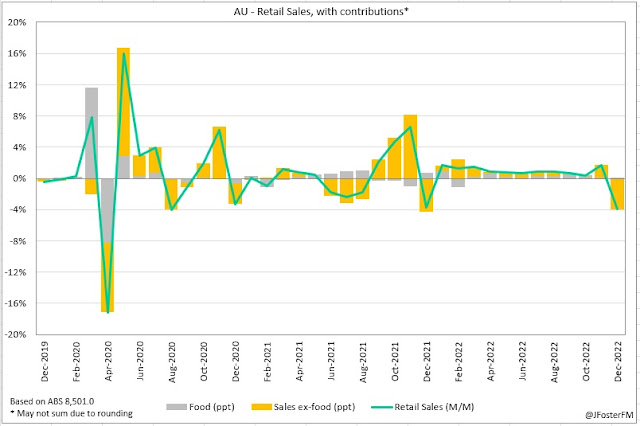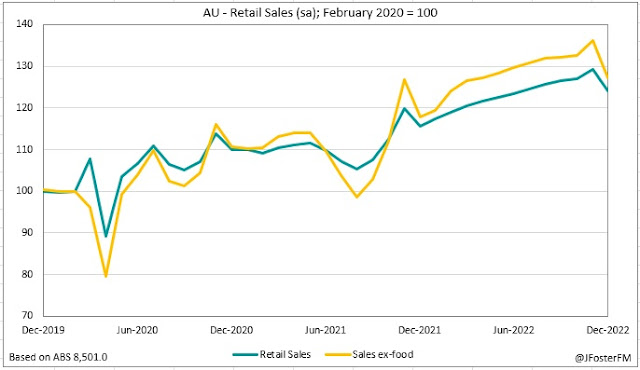Australian retail sales declined heavily by 3.9% in December, their first monthly fall in 2022. Black Friday discounting is increasingly pulling Christmas spending forward into November, amplified in 2022 by cost-of-living pressures. Large unwinds in December sales were also seen in the pandemic-affected years of 2020 (-3.3%) and 2021 (-3.7%). A moderation in retail sales over Q4 (0.9%) raises some questions over the outlook for household spending in 2023, with the effects of RBA rate hikes yet to fully take hold.
Headline sales fell by 3.9% in December, with discretionary spending (excluding basic food) seeing a much larger 6.5% contraction. This was after Black Friday sales pushed up headline retail by 1.7% in November, with a 2.7% lift in discretionary spending. The declines across the discretionary categories was broad based in December: department stores -14.3%, clothing and footwear -13.1%, household goods -7.8%, other goods -4.6%, though restaurants and cafes held flat. Food sales lifted by 0.3%m/m.
For comparison, discretionary-led pullbacks in December were seen in 2020 (-4.6%) and 2021 (-7.1%), though in both years reopenings from earlier lockdowns, together with Black Friday, had boosted November sales (6.2% in 2020 and 13.2% in 2021).
Over the quarter, retail sales slowed to a 0.9% rise from 2.5% in Q3. The slowdown in the discretionary categories was more pronounced, from 2.6% to 0.2%. Besides the unwind from Black Friday, another factor behind the slowdown may be the surge in holiday travel over the peak summer period. Increased spending could be going to services at the expense of the more goods-based categories reflected in the retail data. That said, the headwinds from cost-of-living pressures, RBA rate hikes and weak consumer sentiment could be starting to show up in weakening discretionary spending.



